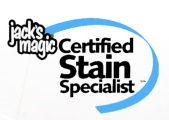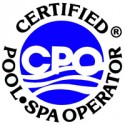Author Archive
Converting To A Salt System
Posted by: | CommentsAl Curtis shares the process of converting a pool to a “salt pool” or one that generates it’s own chlorine. It’s not as salty as you may think. There is something that absolutely MUST be installed with a salt sytsem that is sometimes overlooked, don’t miss it. It’s electric!
Calculate Pool Water Volume
Posted by: | CommentsIn order to figure out proper doses of chemicals for your pool, you need to determine how many gallons of water it holds. To do that, you need to know four different numbers.
- Length
- Width
- Average Depth
- Multiplier that determines gallons
Here is the formula:
Length * Width * Average Depth * Multiplier = Gallons
Determine the Multiplier:
Rectangle, square, or free-form pool: Multiplier = 7.5
Round or Oval pool: Multiplier = 5.9
Determine the Average Depth:
To determine the average depth in a pool where the bottom slopes, measure the shallow end and the deep end depth. Add them together and divide by two (2).
Example: Shallow End = 2′ Deep End = 10′ 2′ + 10′ = 12′ then 12′/2 = 6′ Average DepthFighting Algae In Your Swimming Pool
Posted by: | CommentsOnce algae has been allowed to bloom, it is quite tiresome to destroy. The common steps to get rid of an algae problem are:
- Shock treat the pool. If you are using chlorine, aim for at least 10ppm free chlorine (10 times the recommended minimum level).
- Circulate the water round the clock if possible.
- Brush the pool and vacuum.
- Add a commercial algaecide prepared for the algae you have (green, mustard or black) according to the instructions.
- Repeat brushing and vacuuming daily if possible. Add more chlorine if the level falls below 5ppm.
- Clean or backwash your filter regularly.
Types Of Algae
Posted by: | CommentsAlgae in swimming pools is often referred to by its color:
- Green Algae – by far the most common and relatively easy to treat;
- Yellow/ Mustard Algae – troublesome to treat but also relatively susceptible to treatment;
- Black Algae – can be very difficult to get rid of, especially in plastered pools;
- Pink Algae – not an algae at all, but is a fungus called Paecilomyces lilacinus that causes slimy white, pink or grey colonies.











